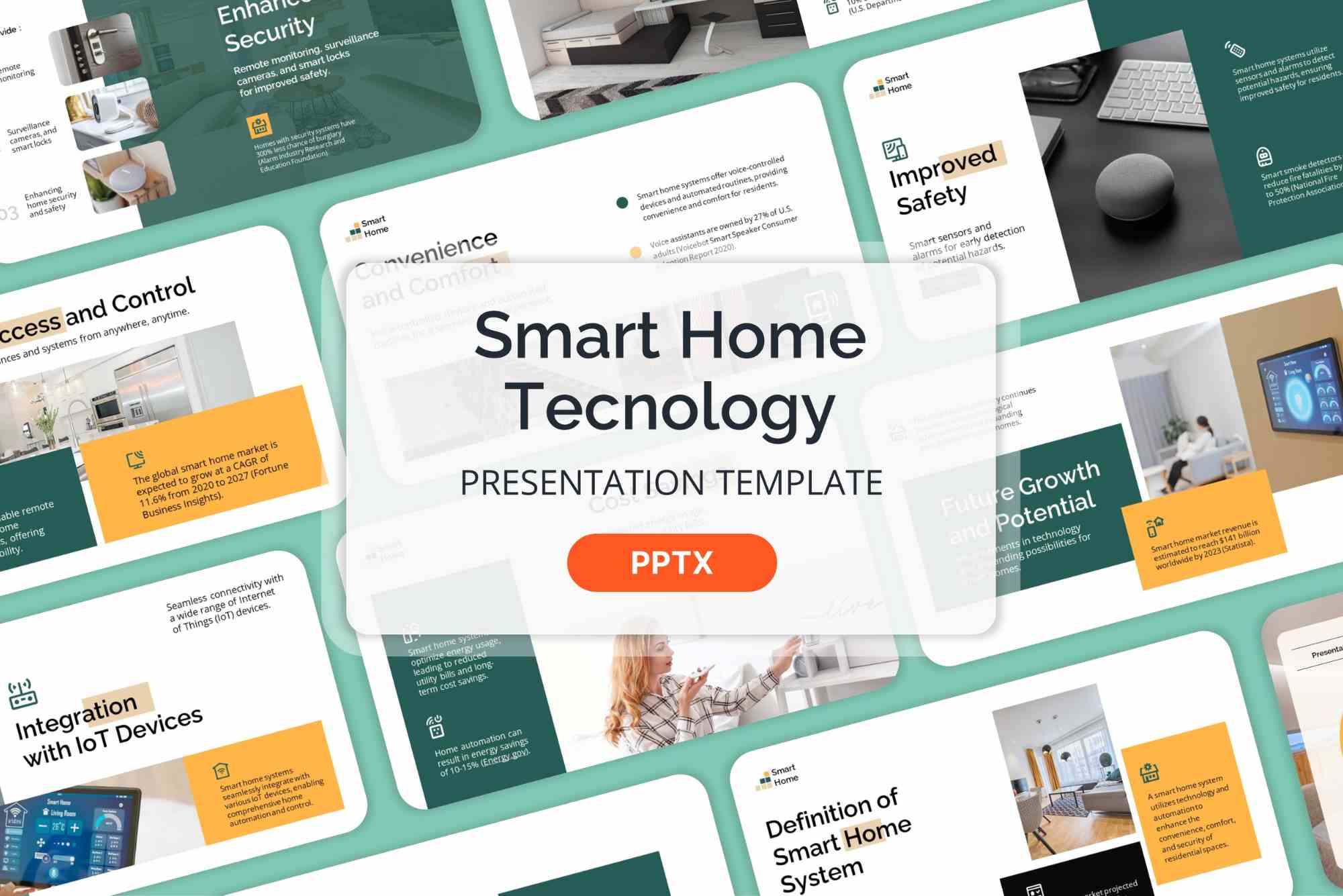Smart Home Automation System PPT: How to Set Up Your Smart Home
Smart living has become more than just a trend. With the rise of connected devices, the idea of managing your home through technology has become a daily reality. A smart home automation system PPT is one of the best ways to understand, present, and implement the concept. It allows you to see how devices interact, how energy is managed, and how security is enhanced. But beyond the slides, setting up your smart home requires practical knowledge and careful planning. This guide explores how to create and use a smart home automation system effectively while aligning with what you would typically see in a professional PPT presentation.
Understanding Smart Home Automation
A smart home automation system is a network of connected devices that work together to make your living space more efficient, comfortable, and secure. The system uses controllers, sensors, and wireless communication to automate everyday tasks such as lighting, heating, cooling, and security monitoring. In a smart home automation system PPT, these elements are often represented with diagrams showing device interconnectivity, cloud storage, and user control through mobile apps.
Why a Smart Home Automation System PPT Matters
A PPT presentation simplifies a complex topic like automation by visualizing how different devices communicate. It shows workflows of how sensors detect activity, send data to a hub, and allow you to control appliances from your smartphone. Whether you are a student, professional, or homeowner exploring automation, a smart home automation system PPT can help you understand the benefits and the setup process in a structured way.
Essential Components of a Smart Home Automation System
When setting up your smart home, the first step is knowing the building blocks. Just like in a smart home automation system PPT, the setup is usually explained in sections such as controllers, communication protocols, and smart devices.
The central hub, often called a gateway or controller, is the brain of your smart home. It connects devices such as lights, thermostats, and security cameras. Sensors detect motion, temperature, or humidity and send signals to the hub. Smart devices then act according to your preferences. For example, lights may turn on automatically when motion is detected at night. A PPT would usually show this process in a flow diagram, but in practice, you need compatible devices and a strong Wi-Fi or Zigbee/Z-Wave connection.
How to Set Up Your Smart Home
Setting up a smart home requires careful planning. Just as a smart home automation system PPT outlines step-by-step processes, you need to follow a structured approach in real life. Start by identifying the tasks you want to automate. Some homeowners begin with lighting, while others prioritize security or climate control.
Next, choose a reliable hub that supports multiple protocols. This ensures that devices from different brands can work together. Install sensors and smart devices room by room, testing each feature before moving to the next. Finally, integrate everything into a mobile app so you can control your home remotely. The PPT equivalent of this would be a setup flow chart, but in real terms, it is about syncing devices carefully and troubleshooting connectivity issues as you go.
Benefits of Smart Home Automation
One of the major highlights often emphasized in a smart home automation system PPT is the benefit of convenience. Lights adjust themselves, thermostats optimize energy use, and security systems alert you in real time. Apart from convenience, smart homes save energy, reduce bills, and enhance safety. For families, the peace of mind offered by automated locks and surveillance is invaluable. For tech enthusiasts, the ability to customize routines makes daily life more efficient.
Challenges in Smart Home Automation
While a smart home automation system PPT may highlight the advantages, the challenges deserve equal attention. Compatibility issues are common when mixing devices from different brands. Security is another concern since connected systems can be vulnerable to hacking if not properly secured. Additionally, the cost of devices and professional installation may deter some homeowners. Addressing these challenges involves choosing trusted brands, using strong encryption for your network, and starting small before expanding your system.
Smart Home Automation in Everyday Life
A day in the life of a smart home user looks different from a traditional household. Imagine waking up to blinds opening automatically while your coffee machine brews fresh coffee. As you leave for work, your security system activates, and the thermostat adjusts to save energy. By evening, lights switch on as you approach home. A smart home automation system PPT may present this as a timeline or storyboard, but in real life, it translates into comfort, efficiency, and better time management.
Creating a Smart Home Automation System PPT for Learning
If you are preparing a smart home automation system PPT for a class, training, or personal understanding, focus on clarity. Start with an introduction explaining the concept of automation. Add slides on the components—controllers, sensors, communication protocols, and smart devices. Use flow diagrams to show how signals move from sensors to devices through the hub. Conclude with real-life examples, benefits, and challenges. Visuals such as icons, infographics, and charts make complex concepts easier to grasp.
Future of Smart Home Automation
Looking ahead, the role of artificial intelligence and machine learning will expand in smart homes. PPT presentations already showcase how predictive algorithms will make homes smarter by learning from user behavior. For example, future thermostats may adjust automatically without user input by predicting weather patterns. The future will also bring better integration between devices, stronger security, and lower costs, making automation accessible to more households.
FAQs
What is a smart home automation system PPT?
It is a presentation that explains how connected devices in a smart home function together, often using visuals and flow charts.
How do I create a smart home automation PPT for students?
Start with an overview of smart homes, add slides on components, and explain automation workflows with diagrams for clarity.
What are the key devices in a smart home?
The main devices include smart hubs, sensors, lights, thermostats, locks, and cameras, all controlled through an app or voice assistant.
Can I set up a smart home without technical knowledge?
Yes, many devices are designed for beginners. Most use simple plug-and-play setups with app-based instructions.
Is a smart home system secure?
Security depends on your network and devices. Using strong Wi-Fi passwords, regular updates, and trusted brands improves protection.
A smart home automation system PPT is not just a tool for presentations; it serves as a guide for planning and executing real smart home setups. By understanding the components, benefits, and challenges, you can transform your living space into a modern, efficient, and secure environment. Whether you are creating a PPT for learning or setting up your home step by step, the process begins with knowledge and planning.




